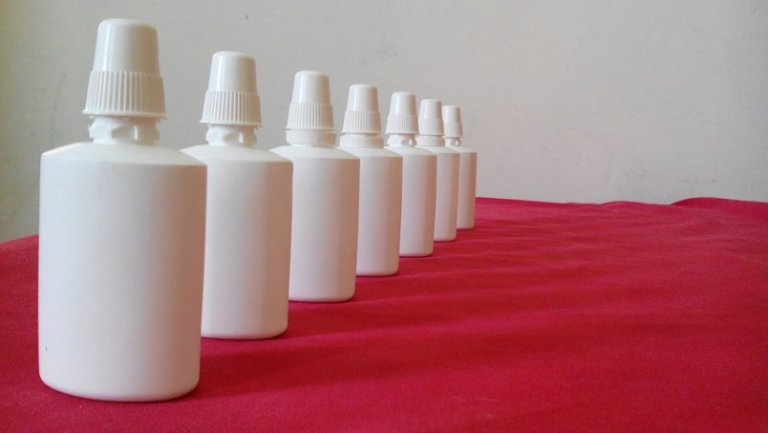Back
Here are some non-prescription drugs that can still harm you

Mexico has a drug problem, but it’s not all related to narcotics and gangs.
At pharmacies there, you can get a variety of potent medications that would require a prescription in Canada or the U.S.
Over the years, I’ve stopped being surprised with patients returning from their vacations with antibiotics and cardiac medications they purchased without a prescription.
In order to slow down the progressive evolution of drug-resistant bacteria (such as MRSA), Canadian doctors are careful to avoid overprescribing antibiotics. Sometimes, it feels futile when the pharmacies in the rest of the world are selling antibiotics for common colds.
Though Canada has good regulations to increase medication-related safety, most consumers underestimate the power - and danger - of drugs they can currently buy without seeing their doctors.
In this column, you’ll learn what you should know about the risks of the top-six drugs you can buy in Canada without a doctor’s prescription.
Let’s start with the two most dangerous:
1. ASA or Aspirin. ASA (usually at a low dose of 80 or 81 mg and called a “baby aspirin” though it is no longer safe to give to children) was once recommended for every senior to prevent heart attacks.
ASA has been shown to prevent or reduce the severity of a heart attack - and to a lesser extent reducing the risk of strokes caused by blood clots - by inhibiting the action of platelets – the blood cells that aggregate and form blood clots in the arteries supplying the muscle of the heart.
More recently, ASA has been shown to reduce the risk for colon cancer. It is also a painkiller and an anti-inflammatory. In the olden days when I was a child, I was given ASA to treat rheumatoid arthritis.
However, these benefits come with significant risks, mainly of bleeding – primarily from the gastrointestinal tract, resulting in an increased risk of bleeding stomach ulcers.
For these reasons, ASA is no longer recommended for the primary prevention (i.e. for healthy people who are not known to be at increased risk) of heart attacks or strokes. However, ASA is appropriate for some patients who have had a previous heart attack or stroke and for others for whom physicians have determined that the benefits of taking it outweigh the risks of bleeding.
If you are currently taking daily ASA, talk to your doctor to determine if it is appropriate for you given your personal medical profile. You should not take ASA as an anti-inflammatory or a painkiller, as there are alternatives that are much safer.
2. Ibuprofen. Advil and Motrin are commonly given to children for fever. Like ASA, ibuprofen is an anti-inflammatory and painkiller. It is effective for the short-term management of muscle or tendon strains, but like ASA, it increases your risk for a bleeding ulcer. Though the bacteria, H. pylori is a principle cause of stomach and duodenal ulcers, the only times I’ve seen young people with ulcers was a result of taking ibuprofen.
A lot of seniors reach for ibuprofen to manage the pain of osteoarthritis, but it would be much safe for them to take acetaminophen or Tylenol. In addition to the risks of gastrointestinal bleeding, ibuprofen can raise blood pressure, reduce kidney function, worsen congestive heart failure and interact with certain blood pressure medications.
Naproxen or Alleve is in the same drug class as ibuprofen and carries similar risks.
In my next column, I’ll update you with the dangers of four more potent non-prescription drugs.
Dr. Davidicus Wong is a family physician. His Healthwise Column appears regularly in this paper. For more on achieving your positive potential in life, read his blog at davidicuswong.wordpress.com.
By: Vancouver Courier
GuidedBy is a community builder and part of the Glacier Media news network. This article originally appeared on a Glacier Media publication.
Location
Topics
Related Stories
-
Healthcare
5 Stretch Exercises to Ease Your Back Pain
Back pain is problematic for many people, and it may be especially cumbersome for individuals who work from home on their...
-
Healthcare
How To Treat COVID-19 At Home
The Government of Canada advises anyone with COVID-19 to stay at home unless absolutely necessary and to stay in a separate...
-
Healthcare
How To Social Distance Like A Superstar
Social distancing is one of the most effective ways to contain the spread of COVID-19. While specific restrictions on what...
-
Healthcare Vancouver
B.C. research suggests no mental health benefits to eating your placenta
A new study published May 2 has suggested there are no mental health benefits to eating your placenta. The new research...
-
Healthcare Burnaby
B.C. residents find moving home more stressful than starting a family: poll
Ahead of the what has been deemed the busiest moving day of the year, Sunday June 30, BigSteelBox has released the results of...
-
Health & Wellness Coaches Vancouver
Simple tips to master anxiety
In previous columns, we explored how anxiety is an essential human emotion even though it can hold us back from enjoying our...
-
Healthcare
Women and sleep apnea: Erring on the side of caution
Sponsored Content While it may seem that snoring is more akin to men, that does not dismiss women from the dangers of sleep...
-
Health & Wellness Coaches Burnaby
Healthwise: Battling your false sense of self
What might be the root cause of the great problems of the world: poverty, homelessness, crime, violence, war, racism,...
-
Healthcare Richmond
This Mother’s Day, give mom the gift of excellent hearing
Sponsored Content Roses are red, violets are blue, but hearing clearly may be the best gift a loved one could give you! This...
-
Chiropractors New Westminster
Shockwave therapy can aid chiropractic and physio treatments
Sponsored Content Royal City Health & Manual Therapy clinic offers a full range of healthcare treatments, including...
-
Healthcare New Westminster
Sleep apnea: Is there a cure?
Sponsored Content Sleep apnea is a common breathing disorder that, when untreated, can have severe health and safety...
-
Healthcare New Westminster
Healthwise: Take a proactive approach to care
We do many things out of habit (because that’s the way we’ve always done it) or convention (because that’s what everyone else...
-
Health & Wellness Coaches Vancouver
OLDER AND WISER: Knowing the symptoms of a stroke could save a life
Heart disease and stroke are not to be trifled with. Heart disease is one of the leading causes of death in Canada and one...
-
Healthcare North Vancouver
North Shore counsellor offers integrative approach
Sponsored Content If you’ve ever suffered from a condition like depression, anxiety or post-traumatic stress disorder (PTSD),...
-
Health & Wellness Coaches New Westminster
Be careful. Some online nutrition advice is just plain goofy
My son is 13 and I have noticed he’s devoting more attention to his appearance. He recently asked me for a couple of spoons...
-
Health & Wellness Coaches Burnaby
Healthwise: Are you a winner in life's lottery?
I have a funny habit of buying the occasional lottery ticket and not checking the numbers, knowing full well that winning...
-
Healthcare Richmond
This Mother’s Day, give mom the gift of excellent hearing
Sponsored Content Roses are red, violets are blue, but hearing clearly may be the best gift a loved one could give you! This...
-
Health & Wellness Coaches Prince George
Create a daily routine that will lead to real change
If you're not seeing progress when comes to your weight-loss and lifestyle goals, it’s time to check up on your daily routine....
-
Health & Wellness Coaches Vancouver
Opinion: Those harmless nose sprays can make you dependent
When physicians prescribe medications to you, we have a duty to provide sufficient information for you to make an informed...
-
Healthcare Coquitlam
Seeing you through: Why choosing Basic Eyewear Optical is your best fit
Sponsored Content Your glasses may say a lot about you, but it’s your lifestyle that says even more about your glasses....
-
Health & Wellness Coaches Vancouver
10 simple ways to make 2017 your healthiest
Great news — being vibrantly healthy can be simple. Not easy — effort is required — but simple. The following tips can help...
-
Denturists Coquitlam
Important Health Reasons for Denture Check-ups
While dentures don’t grow and shrink like everything else in our mouths, they still need to be checked over by a registered...
-
Health & Wellness Coaches Vancouver Island
Ten Zen ways to find meaning in life
How do I make sense of my life? Is this all? What can I do about the maelstrom of feelings, ideas, habits, blind spots, and...
-
Healthcare Vancouver
Family doctors need to treat their patients like, well, family
In the office of my family practice, hidden from the view of patients, is a sign along the edge of the counter for my staff to...
-
Healthcare Richmond
Richmond’s got a new hearing clinic
Sponsored Content Should I make a career as a university teacher or a hearing specialist? That’s the question that faced...
-
Home Decor Vancouver
Refreshing Your Home for Spring/Summer
There are many ways you can refresh your house for the spring/summer season. These projects can provide your house with the...
-
Food & Drink Abbotsford
4 Dishes to Make with Summer Peaches
Summer is the perfect time of year to experiment with different ways to use peaches. These juicy, refreshing fruits can be...
-
Home & Garden Abbotsford
How to Create a Zero-waste Household
Reducing your household waste can help the planet in many ways. You may even be able to eliminate your waste completely if...
-
Beauty & Wellness Abbotsford
7 beauty trends for summer 2021
You may be looking forward to re-entering society this summer or at least looking better during a video meeting. Beauty trends...
-
Gifts Abbotsford
Four fabulous experience gift ideas for mom this Mother’s Day
If you’re tired of giving the same old types of Mother’s Day gifts, treat your mom with an experience instead. There are many...
-
Home Furniture & Decor Abbotsford
Working from home? 4 tips for your home office setup
Working from home can be a better experience for you with the right office setup. Setting up your in-home office correctly can...





























